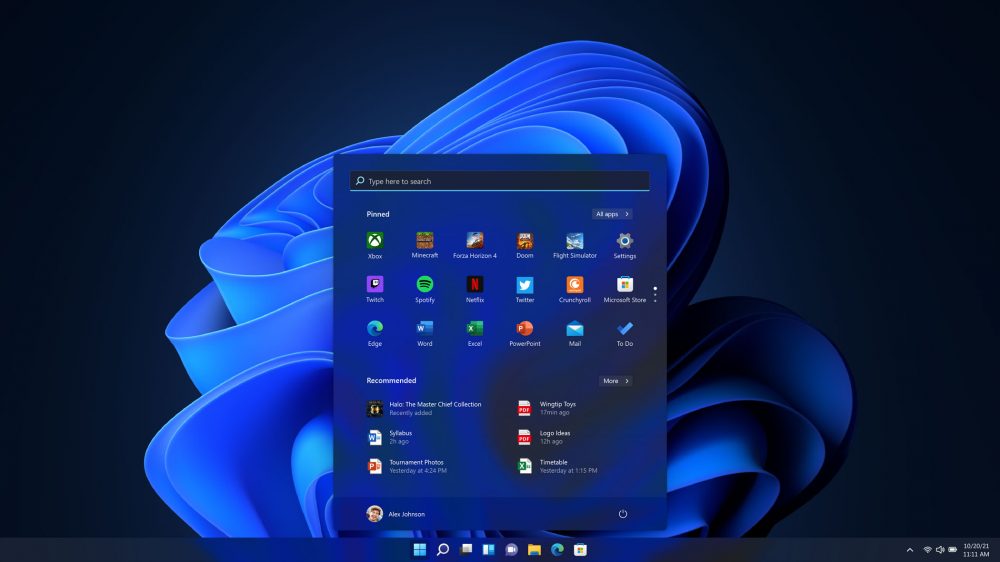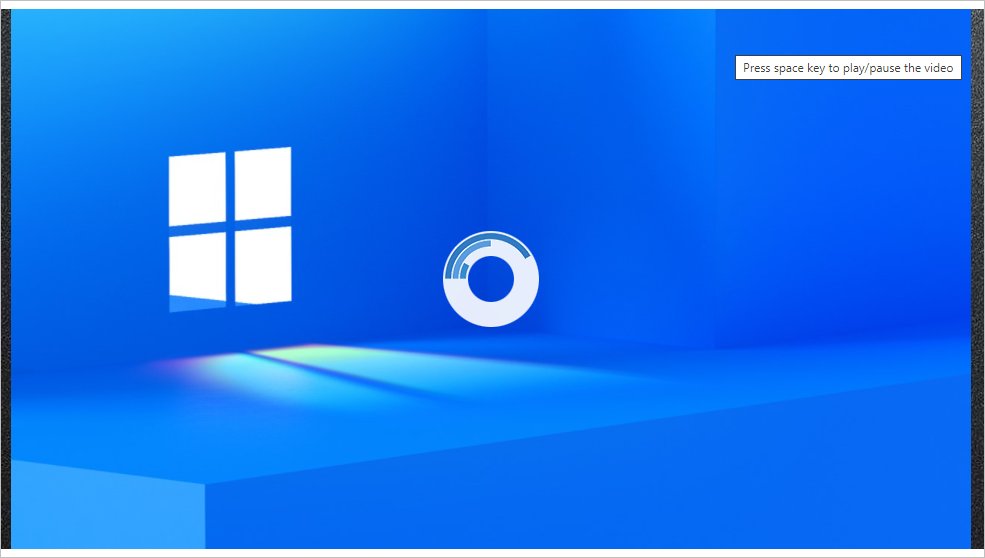A cynical response is all I can manage today.
Plus, my cynical view of past events has been appreciated by some and found entertaining to others.
Let me give you the highlights and answer some questions...
---
Do you remember how Windows 10 was going to be the last version of Windows?
....
Introducing Windows 11
Eventually. It seems that in an online event about the future of Windows, they're using streaming tech from ten years ago.
(and also, this)Do you remember how Windows 8 changed the start menu and how people complained and then, in response, Microsoft put it back where and how it was?
It's moved.
And looks different.

Anyone taking bets on how long before there's an app in the store that mimics the old start menu?
---
"Hey Matt, as you're a Windows Development MVP. What can you tell us about developing for Windows 11?"
Only what was in the announcement. I had no advanced knowledge of today's announcements. I only knew it was coming from the "leaks" on Twitter. There is also an official blog post announcement for developers.
"There seems to be a lack of major changes. It looks a lot like an update to Windows 10 but with an extensive UI refresh."
- Yes, it does. Doesn't it. Hopefully, we'll see the bigger differences in time.
"There seems to be a big focus on PC gaming."
- Yes, there does. People use PCs for gaming. A lot!
"Is this why there haven't been any big updates for Windows in the last few years?"
- Probably. Of course, it's complicated, and there can't be big changes every few months, but this could be connected by the fact I can't remember any noteworthy updates for Windows 10 within the last 2 years.
"There was a lot of focus in an updated UI. Will all apps from Microsoft be updated and look like this?"
- You can probably expect most of Office to look like this and many of the apps that come with Windows to be updated, but there will be some that aren't updated and will keep the look they've had for years (forever!)
From a development perspective, I'm curious what happens with the controls in WPF & WinForms apps.
"Will everything go (back?) to having rounded corners?"
- The trend for rounded and square corners alternates. Don't worry if you're not a fan. It'll change again in a few years.
"A lot was made of the 'sheet of glass' look in the video. This looks like what was called 'Acrylic' previously. Is it the same thing?"
- Very similar. There's more about Mica in the docs.
Again, with my developer hat on, I'm aware of issues relating to using and implementing Acrylic for WinUI3. So let's see where, when, and how this is available to developers...
"I'm curious about how the new design is meant to help 'bring a sense to calm.' What about all the slow, buggy apps and poor UX experiences that frustrate me? Are these getting fixed as well? Or is the new design merely a distraction from poor UX?"
- Let's hope that work is being done to help with the poor UX of many apps. I don't think an OS update will magically fix anything in this area, though. BTW. If you're interested in improving the UX of your app, I wrote a book that can help you.
"Some of the new features look like updated versions of things that were already available in PowerToys. What's up with that?"
- One of the goals of Power Toys is to try things out that may eventually end up "in the box." This is an example of the learning from Power Toys making it into the OS. It's not the same, and I don't expect to give up using Fancy Zones even when using Windows 11.
"A lot of the announced productivity features are things that we've been asking for for years or are things that already exist (such as vertical tabs in Edge) are they worth making a big deal about?"
- Time will tell when we've had a chance to use them for a while. Hopefully, lots of little improvements will lead to a big overall improvement.
"If Teams is integrated into Windows, does this mean they've fixed all those annoying inconsistencies, bugs, and issues with switching between tenants?"
- Let's hope so....
"Windows widgets seem a lot like updated versions of live tiles from Windows Phone and Windows 8?"
- That's definitely a reasonable comparison.
"The page for getting more information (https://www.microsoft.com/en-us/windows/windows-11) includes a tool that can be downloaded to check for device compatibility, but it's packaged as an MSI, rather than an MSIX. I thought MSIX was the recommended format for installing apps. Why isn't this being used? Is MSIX supported for Windows 11?"
- Expect MSIX to continue to work on Windows 11. MSI still works. I assume that it wasn't used here to enable support on devices running ancient versions of Windows that don't support MSIX.
"What can you say about the game pass?"
- Nothing. Games aren't really my thing. (I might be getting old and boring...)
"What's with the new store? This seems to get a refresh every few years, but people don't like using it, and it seems to regularly give unhelpful error messages."
- The store has been rewritten, and hopefully, this will address many of the issues. More here
"Android apps running on Windows!!! What's that about? Wasn't it tried before?"
- Yes, this was tried before. Hopefully, the new "Intel Bridge" will work better than past efforts, as it emulates ARM instructions on Intel processors. Expect there to be limits on what those apps can do when running on Windows, though. Not that there will be things that don't work (there may be a few edge cases) but don't expect them to use all the native features of Windows when they were built for Android.
This is based on the "Windows Subsystem for Android." (Yes, similar to and related to the Windows Subsystem for Linux)
"What else is coming for Windows app developers?"
- A few things:
- With the new store, you can use whatever you want to handle commerce, and Microsoft won't take a cut if you use a separate payment solution.
- An update to PWABuilder.
- A reinforcement of the intention that you should consider WinUI3 as the framework of choice for building native Windows apps.
"Any updates related to WinUI3?"
- Not really. Version 0.8 is now officially released. But most of the work that has been done since the last release (v0.5) has been experimental work in preparation for the 1.0 release.
"What's the 'Windows Apps SDK'?"
- That's the official name for what was previously known as "Project Reunion."
(Yes, it's a long wait for an uninspiring name. I wonder what else was considered and rejected...)
"Apparently, 'Windows is more Open' now, does that mean Open Source?"
- Nope, I don't expect Windows to ever be fully open source, but some technologies and parts of it are, and more are expected in the future.
All this is very new. I make no guarantees about the above and expect to share more information in the future.





